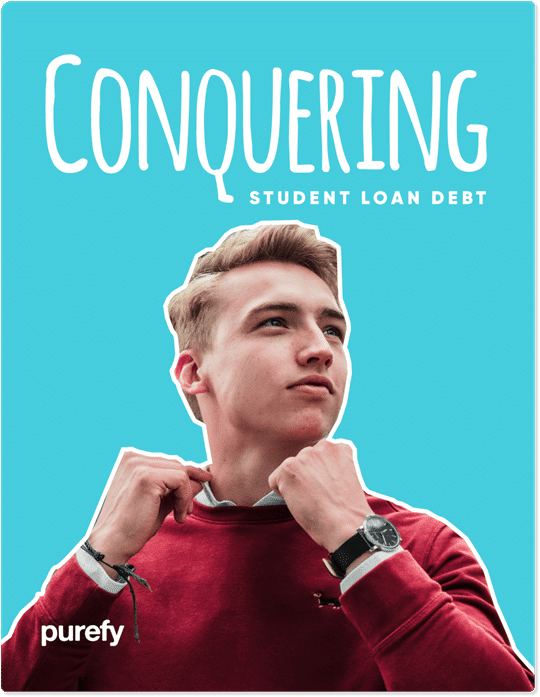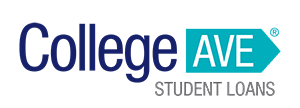The decision to refinance your student loans isn’t always an easy one, and it’s important to take your time to consider whether it’s the right choice for you.
If you’re wondering, is it a good idea to refinance student loans? Here’s what to think about to decide if it’s right for you.
Is it a good idea to refinance student loans?
Student loan refinancing isn’t for everyone, but in the right situation, it can help you save money, simplify your repayment plan and give you more flexibility with your monthly payments.
To determine whether or not it’s a good idea for you to refinance your student loans, think about your current financial situation and your goals. Refinancing federal loans, for instance, means that you’re giving up access to income-driven repayment plans and forgiveness programs.
If your job situation is a bit shaky, it may be better to stick with loans that allow you to reduce your monthly payments based on your income. But if you can afford your monthly payments and don’t have any concerns about your job security, refinancing should be on your radar.
Also, think about what you want your student loan repayment plan to look like. The primary goal for most people who refinance is to lower their interest rate, but you can also get a wide range of repayment options, including shorter and longer repayment periods.
Take your time to look at what top student loan refinance companies are offering and use an online student loan refinancing calculator to get an idea of how you want to tackle your student loans.
Finally, consider your credit situation. While you can get approved for refinancing with a credit score in the mid-600s, it can be difficult to score a low interest rate unless your credit score and income are high. In some cases, it might make sense to take time to build credit before you apply.
What student loans can be refinanced?
You can refinance federal student loans, private student loans or even both together. Some borrowers may opt to refinance only their high-interest private loans, like those with Sallie Mae or Discover. In most cases, it’s easier to make the decision to refinance private student loans because you’re not losing access to the benefits that federal student loans provide. But it can still make sense in many situations to refinance federal loans.
Depending on what you want to do, though, there can be restrictions. For example, not all student loan refinance companies allow a parent to transfer student loan debt to their child, for whom they took out the debt in the first place.
Also, only one lender, PenFed Credit Union, allows spouses to refinance their student loans together into one new loan between the two of them. Other lenders will let spouses be cosigners, but they can’t combine their student loans.
Benefits of refinancing student loans
The primary question you may be asking yourself is, why refinance student loans? There are several clear benefits to refinancing your student loans.
Lower interest rates
Student loan refinance companies can often offer lower interest rates than what you’re currently paying. In fact, student loan refinance interest rates are still near record lows in mid-2021.
To give you an idea of how a lower interest rate can impact you, let’s say you currently owe $25,000 on a 10-year repayment plan with a 6.7% average interest rate and a monthly payment of $286.
If you were to refinance your loans into another 10-year repayment plan with a 4% interest rate, your monthly payment would drop to $253, and you’d save $3,997 in interest over the life of your new loan.
Note that if you can’t get approved for a lower interest rate on your own, you can apply with a creditworthy cosigner to achieve that goal.

Free eBook: How to Conquer Student Loans
Free eBook: How to Conquer Student Loans

Flexible repayment plans
Many student loan refinance companies offer repayment plans that range from five to 20 years. In contrast, the federal government offers 10, 20, 25 and 30 years.
If you want a little more flexibility between 10 and 20 years, or you have the means to go for a shorter repayment term, refinancing can give you a lot more options. One lender, Earnest, lets you pick your repayment plan down to the month, depending on what you want to pay every month.
If you can afford a shorter repayment plan, it could ultimately save you time and money. For example, let’s take the same $25,000 balance with a 6.7% interest rate and refinance it with a seven-year term and a 3.5% interest rate — lenders typically offer lower rates on shorter repayment terms.
With the new loan, your monthly payment would go up by $50 to $336. But you’d be debt-free three years sooner, and you’d save a whopping $6,147 in interest.
In contrast, a longer repayment period could give you some relief if you’re struggling to keep up with your payments. Let’s take the same loan but extend it to a 15-year repayment term and a 4.25% interest rate. In this scenario, your monthly payment would drop by $98 to $188, and you’d still save money on interest because of the lower rate ($518 total).
Whatever you decide, refinancing your student loans can give you the freedom to control your own repayment plan.
Simpler repayment
If you have multiple monthly payments from more than one lender or loan servicer, refinancing your student loans can combine all of those payments into one.
This may not seem like a huge benefit, but over time, it can get harder to keep track of multiple loan payments, especially as you add new loans and other financial accounts to the mix. If you can refinance and enjoy some of the other perks that come with the process, a simpler repayment plan can be a nice bonus.
Transfer debt to a child
As previously mentioned, some student loan refinance companies allow a parent to transfer debt they incurred on behalf of a child to refinance that debt in their child’s name, effectively transferring the responsibility for paying it back.
Of course, both the parent and child need to be on board, and the child will need to be able to qualify for the new loan on their own — or possibly with the parent as a cosigner.
But if you’re a parent who borrowed student loans to help your child to get through school, but you’re not struggling to manage retirement savings and other important financial goals, refinancing can be the key to getting back on the right track.
Drawbacks of refinancing student loans
While there are a lot of strong reasons to consider refinancing your student loans, it’s also important to consider the potential downsides before you move forward.
Not everyone qualifies
Student loan refinancing has relatively modest eligibility criteria, but if you just graduated and haven’t had the chance to build your credit history yet, you may have a tough time getting approved.
And while asking a parent to cosign your loan can help improve your approval odds, that arrangement can come with its own potential pitfalls.
This is because, by cosigning, your parent agrees to make the loan payments if you can’t or don’t. It also means that the loans show up on their credit reports as if they owe the debt. The credit report tradeline counts against them when they apply for credit in the future and can increase their debt-to-income ratio — the percentage of your gross monthly income that goes toward debt payments — even if they’re not actually making payments on your loans.
So if you’re thinking about asking a parent to cosign to help you get approved, talk about what the arrangement entails, so you’re both on the same page. Then make it a priority to pay your monthly bills on time and in full to avoid damaging both of your credit scores.
Qualifying may not be enough
Just because you get approved for student loan refinancing doesn’t mean you’ll get favorable enough terms to make it worth it. The average credit score and salary for people who refinance are 774 and $98,156, respectively, according to Purefy data.
That’s not to say you need to be at those levels to get approved. It just means that you may need to be at or close to those levels to qualify for the best interest rates and terms to make refinancing worth it.
Depending on your current loan situation, though, you may not need to get the best rates for refinancing to make sense. But carefully consider whether you can take some time to improve your credit and income before you apply.
No more federal loan benefits
If you’re refinancing federal student loans, you’ll lose access to any benefits you get with those loans from the Department of Education. That includes:
- Income-driven repayment plans: These federal student loan repayment plans reduce your monthly payments to a fraction of your discretionary income, which can come in handy if your income is less than what you want it to be or you’ve lost your job. While you have to recertify your income every year — so payments can go up over time — if you still have a balance after your 20- or 25-year repayment term ends, the remainder will be forgiven.
- Loan forgiveness programs: The federal government offers two student loan forgiveness programs: Public Service Loan Forgiveness and Teacher Loan Forgiveness. If you qualify for either of those programs, it may make a lot more sense to keep your loans where they are, or at least some of the balance if you’re applying for Teacher Loan Forgiveness because that benefit is capped at $5,000 or $17,500, depending on your area of teaching.
- Loan repayment assistance programs: Several government agencies offer loan repayment assistance programs to help eligible borrowers to pay back what they owe. If you’re a member of the military, a health professional, or a public defender, or you work in another eligible field, you could get tens of thousands of dollars in repayment assistance. Research your options before you pull the trigger on refinancing.
- Generous options if you can’t pay: Deferment and forbearance options can vary among private student loan companies, but in many cases, they don’t compare to what the federal government offers. Also, if you default on federal student loans, you can rehabilitate or consolidate them and bring them out of default status. That’s generally not an option if you default on private student loans.
Of course, if you have private student loans, you don’t need to worry about losing any of these perks. But federal student loan borrowers should think carefully about what they’re giving up before they refinance.
Student loan refinance eligibility: Who can refinance?
If you’re wondering, who can refinance student loans? The answer is that it depends on the lender. Unlike the federal government, which has standardized eligibility requirements for all college students, private lenders each have their own eligibility criteria.
For example, while some set minimum requirements for credit scores and income, others don’t. And while certain lenders stick to more traditional credit underwriting, others may also look at your bank accounts and retirement accounts to determine how you manage your money. The latter option can be helpful if your credit history is still relatively new, but you have a history of spending and saving wisely.
In addition to those requirements, you’ll also typically need to be a U.S. citizen or permanent resident, though some lenders may allow non-permanent residents to apply if they have a cosigner who meets one of those requirements.
You’ll also typically need to be at least the age of majority in your state, which shouldn’t be a problem for most college graduates, and have student loans from a Title IV school.
Before you refinance, make sure you review the eligibility requirements from each lender you’re considering to determine whether you qualify.
Also, make sure you get prequalified with each lender, so you can get an idea of your approval odds and even what your terms would look like before you submit an official application.
The 2 Best Companies to Refinance Student Loans
Our Top-Rated Picks for 2024 Offer Low Rates and No Fees

When should you refinance student loans?
The decision of when to refinance student loans can vary from person to person. However, here are some situations where it might make sense:
- You have private student loans and don’t get access to federal loan benefits.
- You have federal student loans and don’t anticipate needing the benefits.
- Your credit score and salary are relatively high, which can help you maximize your savings.
- You have a cosigner who can help you score a lower interest rate and better terms despite you not having a great credit score and income.
- You want more flexibility with your repayment plan, including the option for a shorter repayment term.
- You’re a parent and are hoping to transfer debt that you incurred on behalf of your child to them, so they can take over monthly payments.
While this isn’t a comprehensive list, take the time to think about your situation and whether now is the right time for you to refinance or if you should wait a bit and improve your situation before you apply.
Keep in mind, too, that student loan refinance interest rates are near record lows, and it is possible for them to increase over time. If your situation isn’t perfect for getting the best terms, but it’s close enough, it may still make sense to refinance to take advantage of the low rates.
How to get the lowest student loan refinance rates
For most people, the primary goal of refinancing student loans is to score a lower interest rate. But instead of just going for a lower rate, look for opportunities to get the lowest rate possible. Here’s how to do it:
- Shop around: As previously mentioned, each private lender has its own set of eligibility criteria, and that extends to how it determines interest rates. What’s more, every lender has its own range of interest rates, which means that you could get a lower rate with one lender over another simply because its rates are better. Take some time to shop around and compare rate offers from multiple lenders to ensure that you get the best one possible.
- Improve your credit: If you can’t get a cosigner or you prefer to apply without one, check your credit score and review your credit report to determine if there are areas you need to address. Look for opportunities to improve your credit score, such as paying down credit card balances, disputing inaccurate credit report information and avoiding new credit unless you need it. This process can take time, but the savings can be worth it.
- Get a cosigner: If your credit situation will take a while to improve and a parent is willing to cosign, their credit and income can help improve your chances of getting approved with a low interest rate.
One thing to note is that there are generally two types of interest rates from which you can choose: fixed and variable. While you can get a lower interest rate by choosing a variable rate, that rate will fluctuate over time according to market conditions, which means that it could ultimately be higher than the initial fixed rate. Unless you have plans to pay down the debt extremely quickly, it’s generally better to opt for a fixed interest rate.
Interested in Student Loan Refinancing? Compare rates from top-rated lenders and see how much you could save.
Checking your rates takes 2 minutes and has no impact on credit.
How to compare the best student loan refinance rates
Shopping around is one of the best ways to ensure that you get the lowest interest rate possible for your credit profile. And while most student loan refinance companies offer prequalification with just a soft credit check — this won’t hurt your credit score — it can be incredibly time-consuming to go through that process with each individual lender.
Instead, consider using the Purefy Compare Rates tool to do your comparison shopping. This prequalification process requires all of the same information:
- Name and address
- Date of birth
- Social Security number
- Citizenship status
- Contact information
- Type of student loans
- School and the highest degree you obtained
- Annual income
- Living arrangement
- Loan amount
- Refinancing goal
Once you have entered this information, you’ll be able to compare interest rates from multiple lenders side by side based on your credit profile. The best part? It takes just two minutes to see rate offers.
As you compare lenders, make sure that you consider more than just the interest rates, especially if you have two lenders that offer similar terms. If one lender provides better benefits overall, it may be worth it to take a slightly higher rate.
Also, pay special attention to the types of interest rates you’re seeing. You’ll want to avoid comparing a variable rate to a fixed rate because the two offer two completely different scenarios.
Why you should refinance student loans
If you’re still wondering, is it a good idea to refinance student loans? The answer really depends on your current situation and your goals.
There are plenty of reasons to refinance student loans, including lower interest rates, better flexibility, simpler repayment and more. And if you’re a parent who wants to transfer responsibility for payments to a child who recently graduated, refinancing is the only way to do it.
Think carefully about what you want to do with your student loan repayment plan and how refinancing could help you achieve your goals. Also, make sure you consider the potential things you’ll miss out on if you decide to refinance. After all, you can’t go back to federal loans after you’ve refinanced them with a private lender.
If you’re still on the fence about refinancing, at least explore your options to get as much information as you can before you make your decision. That can include comparing student loan refinance interest rates and comparing them to what you’re paying right now and also using a calculator to get an idea of what your monthly payments would look like.
The important thing is that you take steps to see how you can improve your current situation and whether or not refinancing can get you there.




















